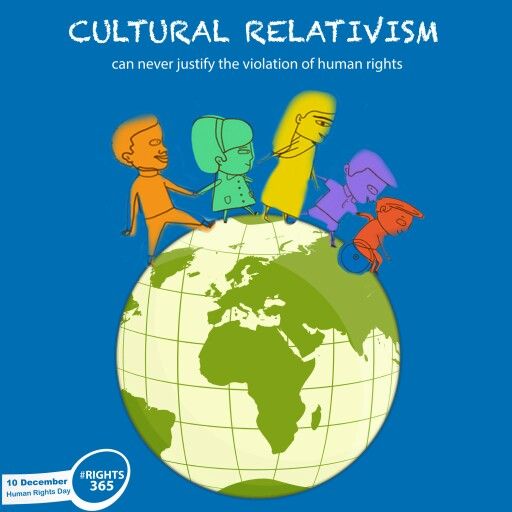The exploration of cultural relativism through artistic expressions, such as poster drawings, provides an enriching approach to understanding this complex sociological concept. For many, the visual representation of cultural ideas can evoke a deeper appreciation and critical examination of diverse cultural practices and beliefs. This discourse delves into the nuances of cultural relativism, elucidating its distinction from ethnocentrism and reinforcing its relevance in contemporary society.
Cultural relativism posits that a person’s beliefs and activities should be understood based on that person’s own culture, rather than be judged against the criteria of another culture. This principle stands in stark contrast to ethnocentrism, which evaluates other cultures through the lens of one’s own, often leading to a biased perspective. The divergence between these two notions forms the foundation for a multitude of societal implications, inviting robust debate and discourse.
Artistic representations such as poster drawings serve as powerful vehicles for communicating complex ideas. By encapsulating cultural relativism visually, posters can engage audiences, provoke thought, and inspire dialogue. The following sections will examine the elements of effective cultural relativism posters, the expectations surrounding the creation of these artworks, and the potential impact they can have on viewers.
The Art of Communication: Elements of an Effective Cultural Relativism Poster
The effectiveness of a cultural relativism poster hinges on several key elements that collectively create an impactful visual narrative. These components include imagery, text, color schemes, and layout. Each element must be carefully integrated to convey the underlying message of cultural appreciation and understanding.
Imagery plays a crucial role; it can involve photographs, illustrations, or symbols that resonate with various cultures. Icons of global significance, such as the Earth, traditional artifacts, or even inclusive representations of individuals from diverse backgrounds can visually articulate the essence of cultural relativism. Visual elements should not only be aesthetically appealing but also thought-provoking, encouraging viewers to reflect on their own cultural viewpoints.
Textual content complements the imagery, clarifying the message and deepening the viewer’s understanding. The choice of words must encapsulate the essence of cultural relativism, employing terminology that invites critical thought. Phrases such as “Understanding, Not Judgment” or “Embrace Diversity” can succinctly summarize the core principles of cultural relativism, while other informative texts can offer brief background or definitions to educate viewers.
Color schemes are another vital aspect. Colors have inherent psychological effects; warm colors may evoke feelings of inclusion and warmth, while cooler tones suggest calm and reflection. The strategic use of color can enhance the overall appeal of a poster while simultaneously reinforcing its message. A balanced layout, organized and uncluttered, allows viewers to engage with the poster without cognitive overload, enabling a more profound comprehension of the concepts presented.
Expectation and Responsibility: The Role of Creators
The task of creating a cultural relativism poster entails significant responsibility. Artists and communicators must approach the subject with sensitivity and an awareness of their own cultural biases. The expectation is not merely to create a visually appealing poster but to foster genuine understanding and dialogue surrounding cultural differences.
As creators navigate the landscape of cultural representation, they must cultivate authenticity. This involves respectful and accurate portrayals of cultural elements, avoiding stereotypes and clichés that can perpetuate ethnocentric views. For instance, depicting traditional attire without context can lead to misinterpretation; instead, artists should strive to portray cultural practices with nuance and depth, perhaps including narratives that explain their significance.
Furthermore, creators are encouraged to engage with members of the cultures they are representing. Collaborating with individuals from diverse backgrounds can provide invaluable insights, ensuring that the artwork is rooted in authentic experiences rather than generalized assumptions. This collaborative approach not only enriches the content but also aligns with the principles of cultural relativism by valuing the diverse voices within the creative process.
The Potential Impact: Inspiring Dialogue Through Art
When adequately executed, cultural relativism posters wield the power to instigate meaningful conversations about diversity, acceptance, and the importance of understanding various cultural contexts. The visual medium transcends linguistic barriers, enabling the message to resonate with a broader audience. In educational settings, for instance, such posters can serve as catalysts for discussion, prompting students to engage with cultural concepts that may have previously felt abstract or inaccessible.
Moreover, these artworks can empower individuals to confront their own biases and misconceptions. By inviting viewers to reflect on their cultural perceptions, posters can encourage a shift towards more inclusive attitudes. The visual representation of cultural relativism challenges viewers to consider the motivations behind their judgments and the implications of viewing other cultures through an ethnocentric lens.
In the broader social landscape, cultural relativism posters can contribute to movements against discrimination and exclusion. These artworks affirm the dignity and worth of all cultures, bolstering initiatives aimed at promoting inclusivity and social justice. By circulating these visuals in public spaces, communities can foster environments that celebrate diversity and encourage intercultural dialogue, thereby laying the groundwork for greater societal cohesion.
Conclusion: A Vision for Cultural Appreciation
In conclusion, the creative manifestation of cultural relativism through poster drawings encapsulates a critical discourse imperative for our increasingly globalized society. Through thoughtful imagery, textual clarity, and an acute awareness of cultural representation, artists can illuminate the tenets of cultural relativism, facilitating a greater appreciation of diversity.
The responsibility of the creator is immense, necessitating an approach grounded in authenticity, sensitivity, and inclusivity. The collaborative engagement with cultural representatives enriches the narrative, providing a multitude of perspectives that resonate deeply within the community. Ultimately, cultural relativism posters ignite dialogue, challenge ethnocentric biases, and inspire a collective vision for a world where cultural differences are celebrated rather than marginalized.
By acknowledging the intricate tapestry of humanity through visual arts, society can advance towards a future characterized by understanding and respect for the rich mosaic of cultures that inhabit our world.





























